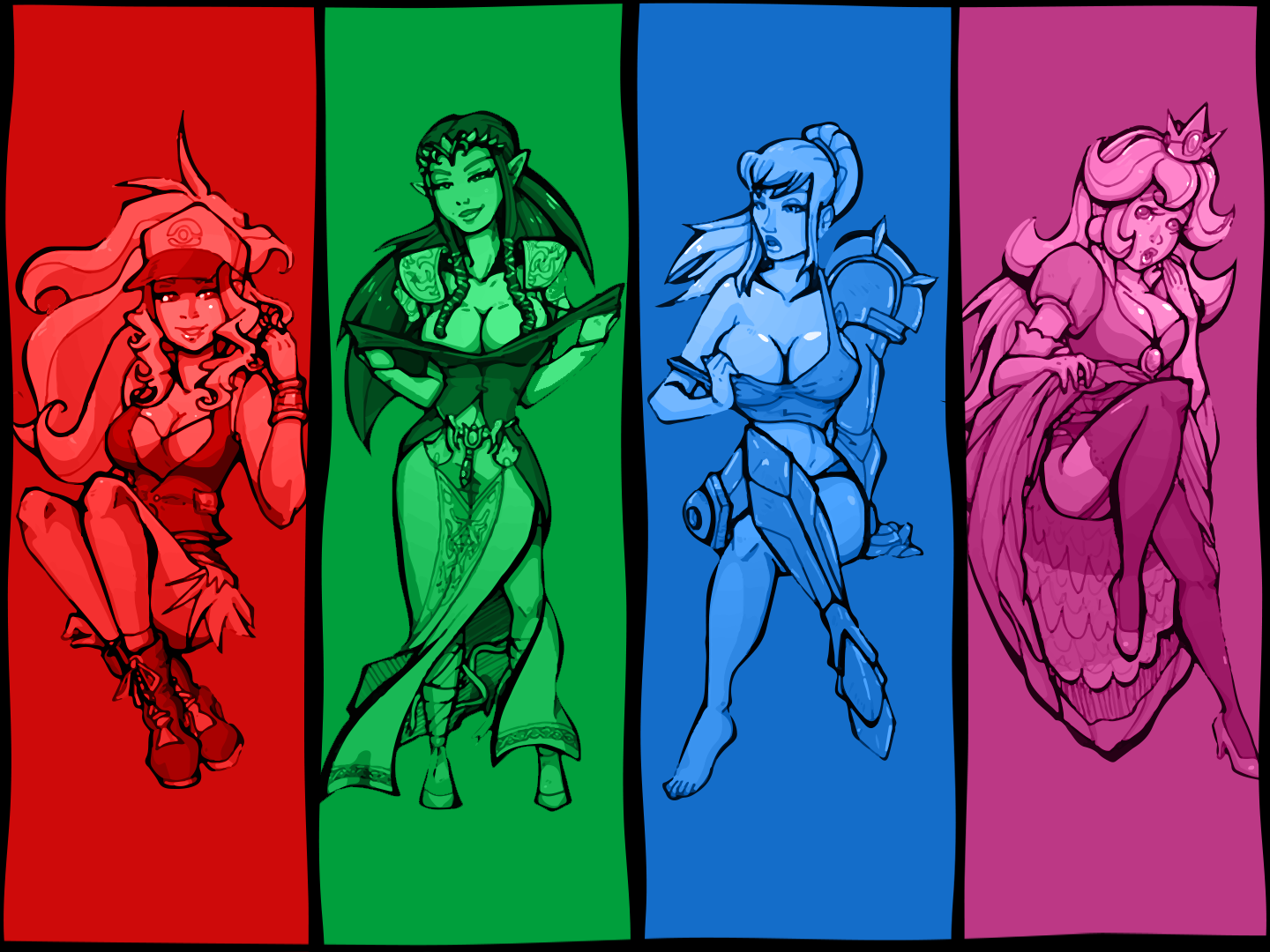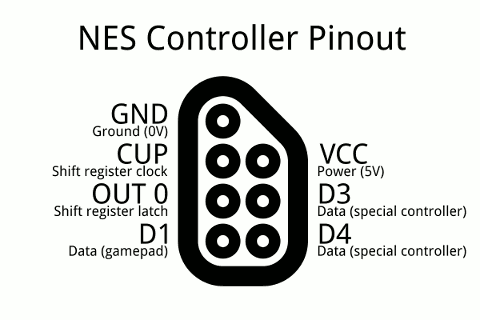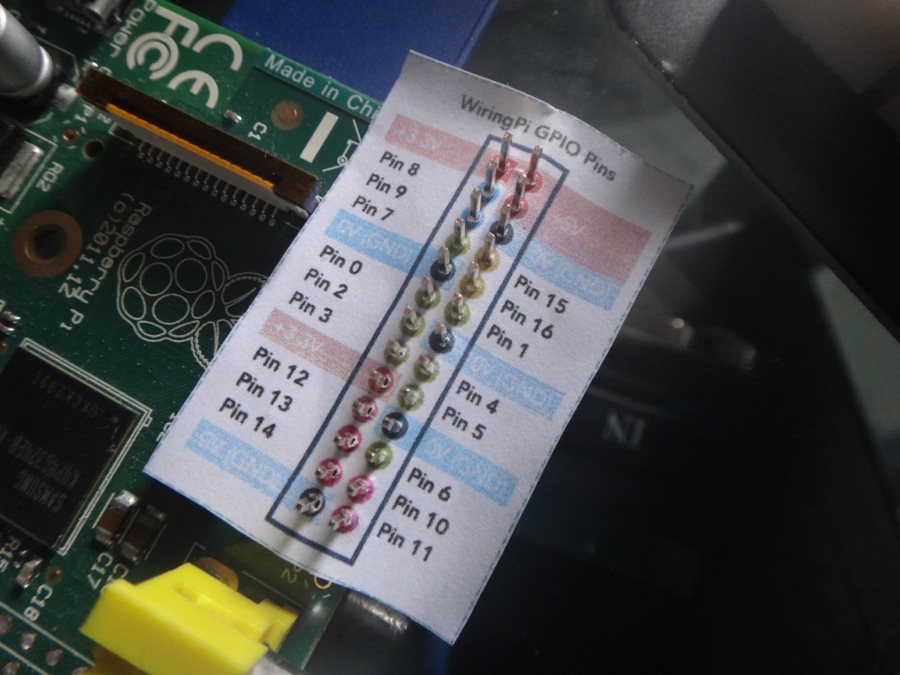Forum Replies Created
-
AuthorPosts
-
roquen
Participantthe grid theme features are not currently functioning.
roquen
Participant~ always means “user home” as in
/home/pi/ = ~so, on the pi your home is probably
/home/piso ~/.emulationstation is
/home/pi/.emulationstationwhere the . says its a hidden directory so type
$ ls -al
and you’ll see it listedbut you don’t have to list it to know its there and goto it, you can just type
$ cd /home/pi/.emulationstationwhich will take you to the place where downloaded_images is located.
the game images are by default placed into
/home/pi/.emulationstation/downloaded_images/systemso for Hudson Island (NES?) it would be
/home/pi/.emulationstation/downloaded_images/nes/adventureisland-image.jpgbut, this is only where the scraper sends the images for its library
the real culprit is in gamelist.xml for that particular system
so, view the gamelist.xml in that system, which is located in /home/pi/.emulationstation/gamelists/nes/gamelist.xml
$ nano /home/pi/.emulationstation/gamelists/nes/gamelist.xmlwill open the file, and you can edit it. find the corrosponding <game> tag, and you can change the file it pulls for the artwork with ease, to whatever directory you’d preferroquen
ParticipantI think it would be cool to include Retroworks games, like Brunilda.
as long as the legality and the specific license is one that permits distribution like that, I think we could include the compiled game as well as its source code.
roquen
ParticipantDid you use the script, or did you use the SD card image?
roquen
ParticipantThere is only an english version, but it appears he’s offering to translate it.
Im sure no one would mind if someone did a spanish version, I could even do one next week.
It would only require changing the theme art and naming it something like
themes/simple-en/
themes/simple-es/it might be overwhelming if we start getting tons of language translations, but for a few languages this system should work well.
roquen
ParticipantI saw your changes, very cool. :D
roquen
ParticipantHow difficult would it be to build a totally different program (we can call it SplashSVG-rpi) that demonstrates a splash screen using SVG files for the total duration of the boot process.
Maybe even with an animation. This would remove the multiple splash screens from retropie and then emulationstation, The default SVG could be a raspberry logo in the center, with branding across the bottom like a vinyl sticker logo on a racecar (ill try to find an example)
emulationstation retropie raspbian lolcats microsoft
aside from all this talk about what could be, huge kudos to you for what there is now. I think its very well rounded and the theme is beautiful.
08/07/2014 at 17:37 in reply to: How hard would it be to add XBMC to emulation station retropie #27568roquen
Participantalso, im 90% sure you can install xbmc straight from apt-get
$ sudo apt-get install xbmc08/07/2014 at 17:34 in reply to: How hard would it be to add XBMC to emulation station retropie #27567roquen
Participantit wouldn’t be hard. Its just outside of the scope of this project.
How you would do it would be (this is how I would do it) You could also just add an entry into the ports section, that’d be easier.
Create entry in es_systems.cfg for XBMC
1.0 location: ~/.emulationstation
2.0 location: /etc/emulationstation/Copy the AppleII theme into /etc/emulationstation/themes/simple/xbmc
make a new xbmc_art_blur.png, xbmc_art.jpg and xbmc_logo.svgI just modify the AppleII ones, and it plugs in pretty well.
then change the commandline to be like <command>xbmc</command>
roquen
ParticipantHere is the joystick driver, I have no idea what im doing, im just trying to get this stupid NES controller to work :P
https://github.com/torvalds/linux/blob/master/drivers/input/joystick/gamecon.c
Is there anything modifiable and recompile-able here or is this too extreme?
roquen
ParticipantI think the goal of most people working with the Rpi, and linux user environments in general is to make a seamless and brandless experience. I don’t think its unreasonable to expect people to want to go brandless or to make their setup look like a custom system.
I don’t think its necessary to make it easy to change or anything, i’m just sayin’.
roquen
ParticipantThe splash screen is an SVG file thats compiled into emulationstation. The only way to change this is to modify the source and then compile it again.
Aloshi doesnt intend on making it easy to change the loading screen because they want to force their “branding”
roquen
ParticipantThe Banana Pi looks like its made by a fake company and it doesn’t have the same mission as Raspberry Pi, which means it wont have the same native support, if any support at all.
The grammar on the website is also terrible. Feels very much like a phishing attempt, honestly.
roquen
ParticipantWas hoping it would fix how its listed. but it didnt.
:-P

roquen
ParticipantIt would be cool to have a “status” page within emulation-station that displayed network information, MAC address, joystick/USB connections and drivers just for information purposes.
I know ES and RetroPi are different projects, but maybe we can help and add this feature (toggle =on/off in config too of course)
roquen
Participant3 / 3
SiO2
XeeBoroquen
Participantfile 2 of 3
Metropolis
Simplicityroquen
ParticipantI can’t either. The directional pad (real NES controllers) doesn’t pick up appropriately for some reason.
roquen
ParticipantI agree, is it possible to merge all the binaries into /usr/bin or somewhere appropriate for the system?
I am a fan of the BSNES concept of an individual folder/package for each ROM that contains all of the stuff for that rom (screenshots, and everything)
I know this is a shift in emulation convention, so thats a tough one, but I like the /usr/bin idea for the system package management integration for upgrades.
roquen
Participantyeah, just install the emulator and then change the execute line in the systems config
roquen
Participantthe problem is probably in your raspi-config
this happens to me and I have to force audio out the HDMI or headphone depending on the monitor/output
the pi likes to forget what its doing so you have to force the output to config for a more stable experience
roquen
ParticipantI just wanted to share settings for others, an easy searchable post with ratios
video_aspect_ratio = #1.333333 (4:3) Traditional SDTV #1.56 (14:9) 4:3/16:9 Compromise aspect ratio #1.6667 (5:3 Super 16mm) #1.77 (16:9) HDTV US standard #1.78 (16:9) HDTV US standard alternate #1.6 (16:10) Common computer screen ratio #1.6667 (5:3) Common European widescreen standard #1.85 Common US widescreen cinema #2.39 Current widescreen cinema alternate #2.40 Current widescreen cinema alternateroquen
Participantthanks
how would I force a 4:3?video_aspect_ratio = 4:3
?roquen
Participantif you see the white dot but nothing else, OpenGL is failing for some reason.
roquen
ParticipantI totally misread your post. Let me retract my suggestion and give you a better one.
Ignore my previous suggestion entirely, I apparently completely forgot how to read today.
Can you run a game from the command-line? As in, does your emulator execute and display properly?
Edit: Extra Questions:
Do you see the white dot in the center of the screen when it boots to emulation station?
roquen
Participantadd/edit these lines in your raspi-config.txt
# Force composite with NTSC 4:3 video output sdtv_mode=0 sdtv_aspect=1 hdmi_ignore_hotplug=1mode: this forces NTSC
aspect: This forces the output to be 4:3
2 is 14:9 and 3 is 16:9ignore_hotplug: this forces composite mode even if it thinks (or actually does) see an HDMI connection
roquen
ParticipantCan emulationstation only be displayed on the standart video outputs of the RPi?
Yes. I have no problems with using the composite video output. I have an old television I saved from a dumpster that I use composite video for. No issues.
You may need to force the video output to composite, though since you see the boot screen, it shouldn’t, but maybe it is trying to send the output to HDMI after it loads.
sudo raspi-config --> Advanced Settings --> force composite output01/22/2014 at 15:52 in reply to: No (S)NES, Sega emulation- failed emulation almost everywhere else #4309roquen
ParticipantSounds like you’ve figured out most of the problems. The HDMI thing might be an overscan issue in raspi-config but if not, then kitchuk’s guidance is probably best.
none of the ROMS on the pi can be compressed. It won’t see them. This is because performance would be incredibly hampered by on the fly decompression.
I do think we should have a different system for saves and game libraries, but this isn’t something I can advocate for much since I can’t program in c/c++ :P
roquen
ParticipantIs pocketsnes the default SNES emulator for RetroPie?
If so, my only issue with it is that it doesn’t create a save file, and in some games it (for whatever reason) has trouble with layering and opacity text.
IE: In Super Mario Kart, the game puts an opacified-number noting your current place on the top of the user-space but pocketsnes renders this layer under-neath.
I don’t know why the emulator itself would be at fault, but the problem is correlative and only occurs when pocketsnes is used.
I have zero controller issues with the default retropie emulator
roquen
Participantmake sure you’re saving the theme to
~/.emulationstation/n64also make sure you’re editing both the
<basicTheme>section as well as the<theme>section.if you’re editing the files in the location that they were originally, its probably that you didn’t edit the basicTheme section.
If your theme is totally destroyed, as in a white background, red header, then you probably did something wrong with the XML file completely. Either you didn’t close a tag or your encoding is wrong (more than likely the former instead of the latter)
roquen
ParticipantI might be doing something wrong but I’d like save states to be seen by the game itself. I don’t just simply want to resume where I left off, I want to have my game progress seen by the game.
IE: Super Mario Brothers has 3 save slots (or 5, I think 3) and I think it would be really nice to be able to set the emulator to see when saves are being made and have the game see them as well.
roquen
Participantis it possible to set the game to save when the game attempts to save to the cartidge? so that you can have multiple saves like you would have if you were using a cart?
or does this require a change to the emulator itself?
01/08/2014 at 19:43 in reply to: Theming the menu on the selection screen and changing selector size #4009roquen
ParticipantCurrently as far as I know, there isn’t a way to tell emulationstation that you want the menu to look different.
Aloshi appears to be working on a new parsing system for images and other theme-related things, so hopefully he includes a way to declare styles for the menu, among other things :)
roquen
ParticipantIm not able to confirm this until late tonight, but I believe you need to run the RetroPie-Setup script to enable the driver. I don’t think its loaded by default.
I don’t know where it is off the top of my head in the SD image (probably ~/RetroPie-Setup/somewhere)
but RetroPie-Setup/master/scriptmodules/setup.shinc has an installation script for the driver.
I am probably not helping, sorry, :P
roquen
ParticipantWill you need a firmware driver for this connection or will it see it as an input device automatically?
Im including images that may or may not be helpful :)–



-
AuthorPosts



